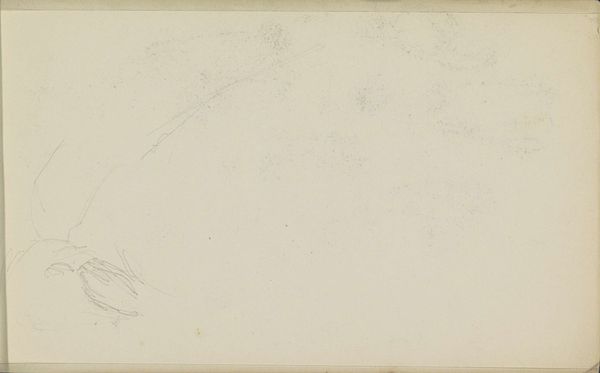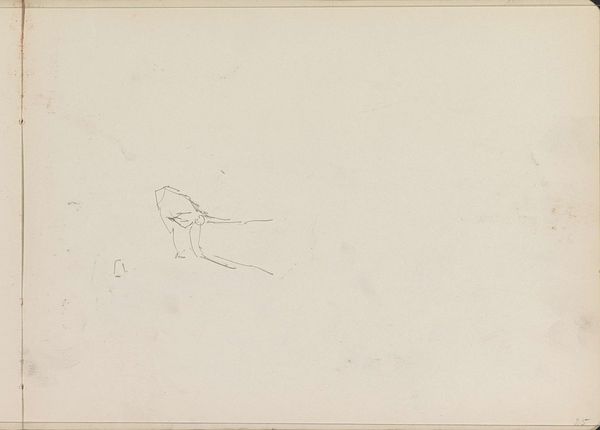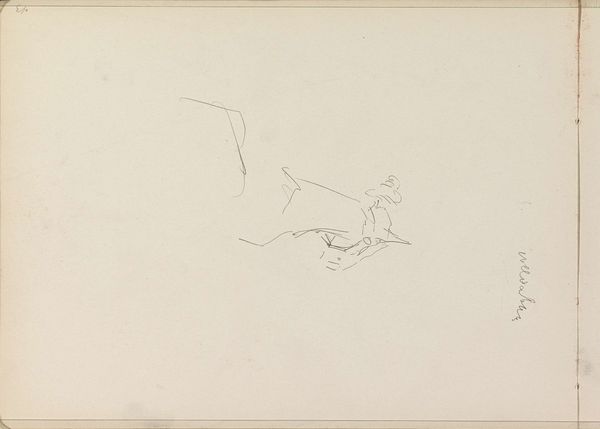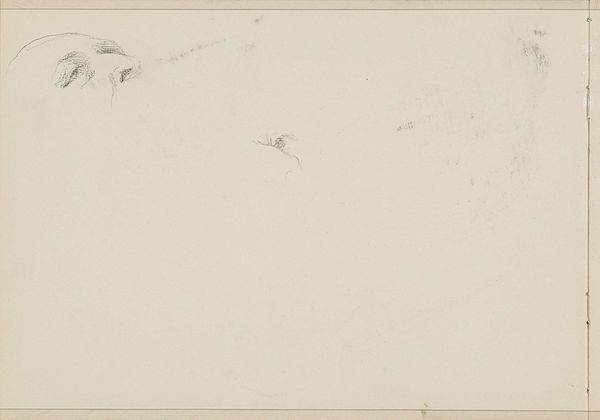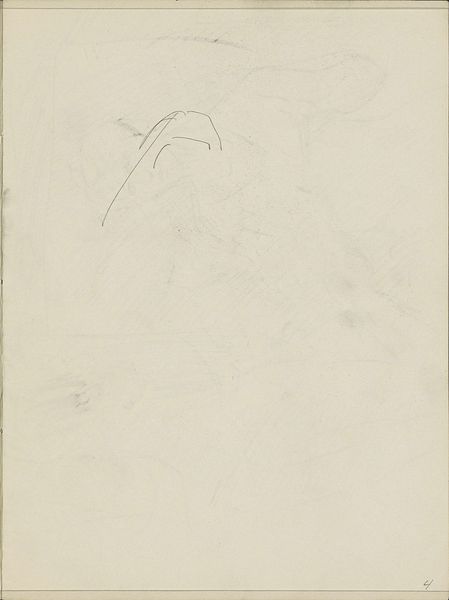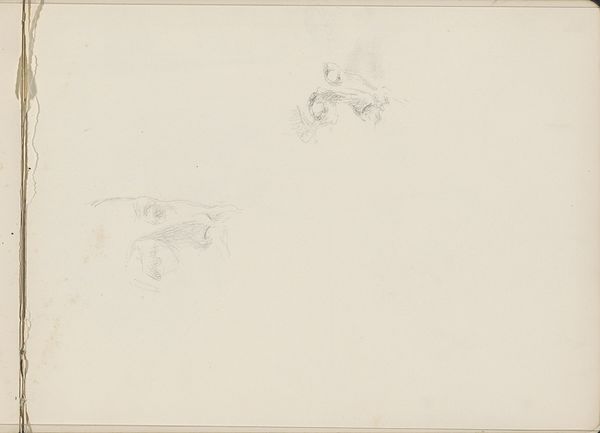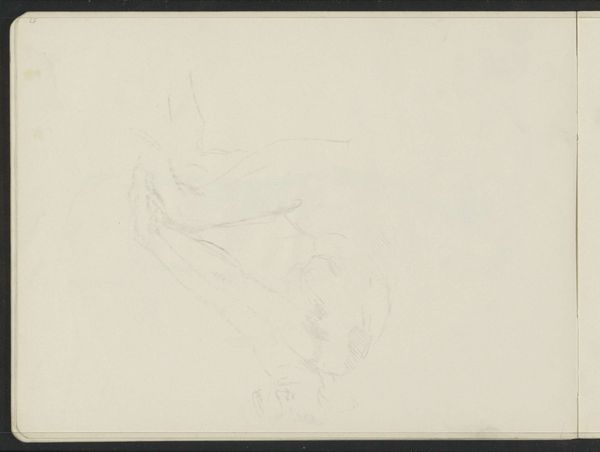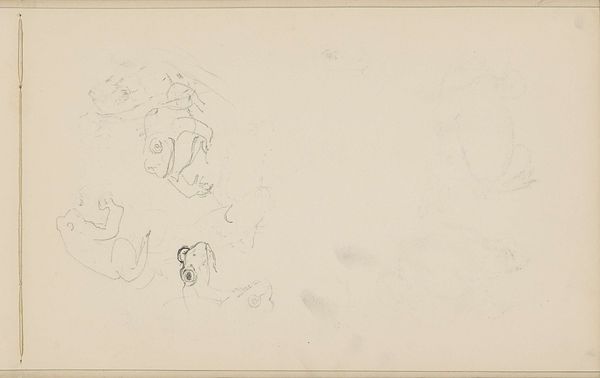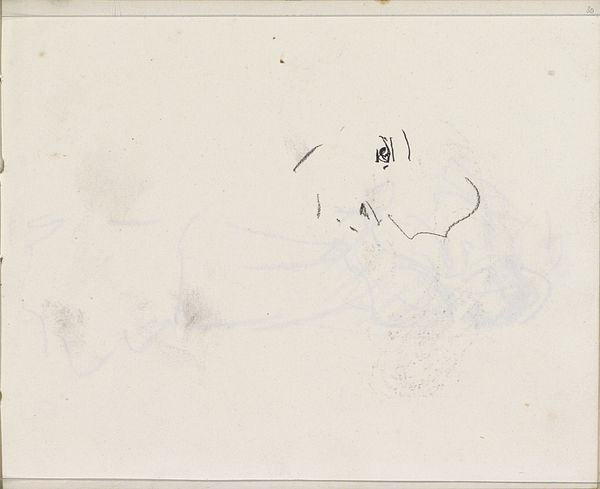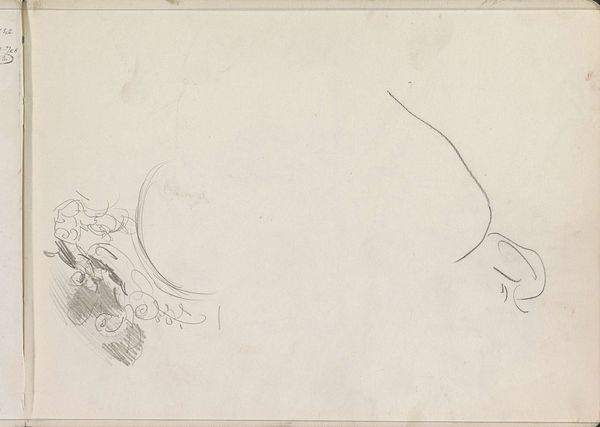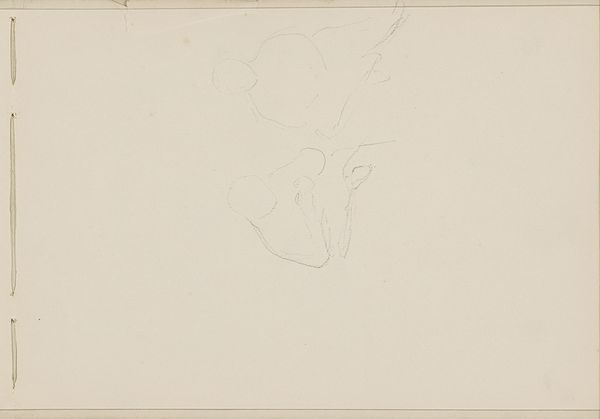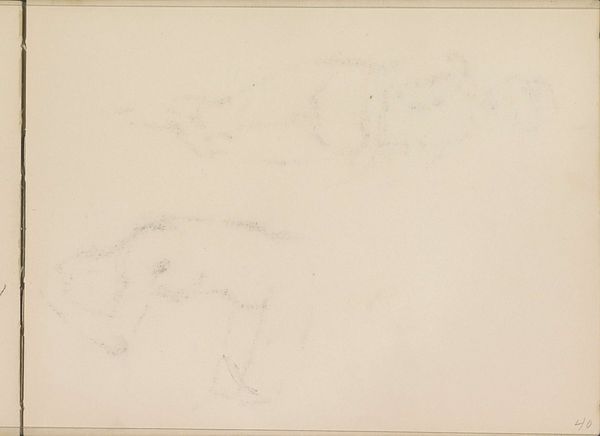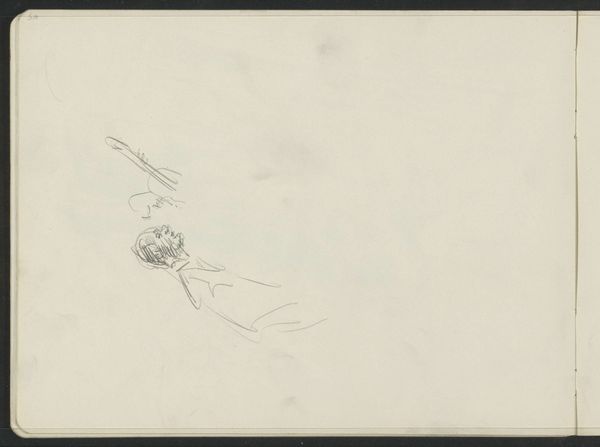
Copyright: Rijks Museum: Open Domain
Curator: Today, we're looking at "Studies, mogelijk van een hoed", or "Studies, possibly of a hat," a pencil drawing on paper by Isaac Israels, likely created sometime between 1915 and 1925. Editor: It's almost ghost-like. A few wisps of graphite on pale paper – like a fleeting thought barely captured. You can sense the movement of the artist's hand but just barely make out what they saw. Curator: Precisely. Israels, though associated with Impressionism, was deeply influenced by the Hague School’s commitment to capturing everyday life and this work is a very informal study. You get a real sense of his working method here. His focus wasn't always on grand narratives. Editor: Which is fascinating if we think about hats, beyond just adornment, as potent symbols of social status, gender, and even political allegiances, especially during this era. Even this quick sketch becomes significant in that light. Curator: I agree. These sketches can serve as crucial documents of material culture in their own right. We see here a fascinating glimpse into the construction of identity through fashion during the early 20th century, made even more powerful by its lack of a concrete image. Editor: So, this delicate rendering reflects how artists observed societal nuances, class distinctions and aspirations, filtered through their own experiences of identity, gender, race and politics in this period? Curator: Yes, in a way. But Israels was more concerned with capturing a feeling, a moment, a detail of modern life. He wasn't necessarily making a pointed socio-political statement with a work like this, instead capturing studies for different ideas. Editor: And yet, unintentionally perhaps, such renderings reveal much about the unspoken social codes and expectations of his time. Even these faint impressions provoke such a reaction, such reflection. It shows the undeniable impact that even casual work may have in documenting and revealing culture. Curator: Ultimately, art provides us with myriad points of entry. It all adds layers to the context surrounding these objects and enables a broader, inclusive perspective. Editor: Precisely!
Comments
No comments
Be the first to comment and join the conversation on the ultimate creative platform.
